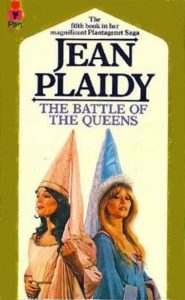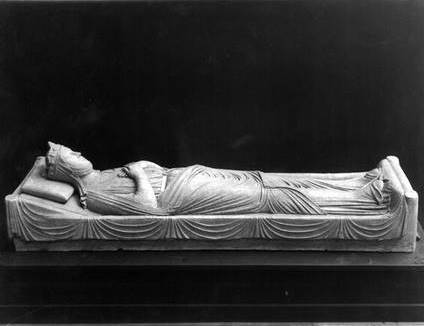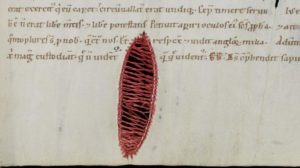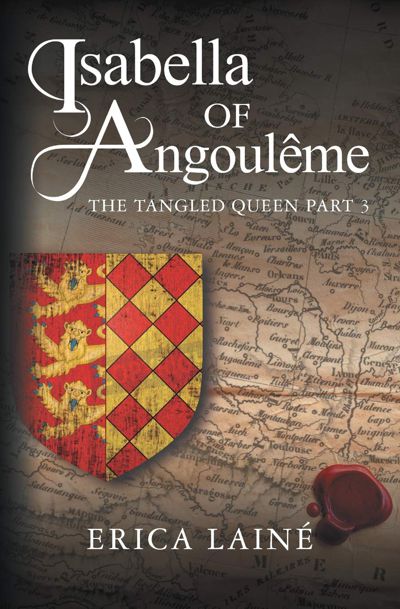
I did not set out to write a trilogy although I have always believed in the power of three. Three points are easily held by the mind, one, two, three, is valid, credible, reliable.
I like planting shrubs in groups of three, in China the three legged stool is a symbol of strength and cooperation. Life has a beginning, a middle and an end. The French revolution gave us liberty, equality, fraternity.

In writing it’s a device that is used for the purposes of rhythm, emphasis and rhetoric. You write it, emphasise it and say it again. The cadences of the Bible are frequently in threes, ‘Love the Lord your God with all your heart, all your soul and all your mind’ and in Shakespeare too. A famous threesome, ‘When shall we three meet again in thunder, lightning, or in rain?’
A trilogy is different from a series of books. In a trilogy the main characters move forward in their lives, slowly evolving as events occur, as life happens. In a way the first book is a set up or a foundation stone and then the story is taken further and deeper. A trilogy ends when the main character either dies or there is some natural conclusion. In a series there are connected worlds but perhaps not a single huge character arc, or there are different characters in each book but they are all in the same world. And a series can be and often is several books. If I were to continue writing about Isabella of Angoulême’s family, her Lusignan children at the court of Henry III and their involvement with him in Gascony this might mean I was writing a series or it might become a second trilogy! Olivia Manning wrote two trilogies about her main characters, Harriet and Guy Pringle, The Balkan Trilogy and The Levant Trilogy and these are sometimes called a series, so the distinction is rather ambiguous.

After I had written Part 1 of Isabella of Angoulême, the Tangled Queen I knew I had to continue her story when she returned to France, this time in her life has not been written about much in fiction. Sharon Kay Penman writes her into the Welsh Princes trilogy, published 1985-1991. Jean Plaidy wrote The Battle of the Queens about Isabella and Blanche of Castile, published in 1978 and considered part of a Plantagenet Saga Series. Now there is an interesting use of saga and series for a description of several books about the same historical period. Rachel Bard wrote Queen Without a Conscience published in 2007. Lisa Hilton wrote a fantasy historical novel, The Stolen Queen, which came out in the same year as Part 1 of The Tangled Queen, 2015. I read some of these again before I began Part 2 but the quote that had gripped me from the very beginning came from an article by W. C. Jordan. And this was the Isabella that I wanted to write about.
Few women were in a position to play as important a role in the history of both England and France in the thirteenth century as the Poitevin countess, Isabelle of Angoulême
I wrote and wrote and wrote and the pages grew. A few squeaks from the publisher about how it would be too big and unwieldy to produce. Could I cut it in half, make it into two books? What! Cut my baby in half? But then I found I could, and a friend who was reading the raw manuscript came to the same conclusion as I did about where it could be divided. A rather crude division, where was the middle page? Not a method that would be recommended I am sure. But it worked! Now more research was needed, and more time could be given to events and details. New chapters had to be written and added to what was now the end of Part 2. New chapters had to be added to the beginning of what was now Part 3. I kept huge notebooks, handwritten, checking chronology and dates all the time and often getting bewildered about where I was. It was like being a detective, plodding police work, then an insight that gave you a clue to what must have happened. I had to make a grid to keep me on track, the story so far, dates, names, descriptions so that people were consistently described. So with some new chapters added at the end of what was now Part 2 and at the beginning of what was now Part 3, a trilogy was born. But by no means ready to walk into the world. One aspect I discovered with the trilogy was that there were events, descriptions, memories that could be referred back to, and this is a bonus when you are hoping your reader can keep up with your era and its people.

The research and parallel editing began, for the story is full of all the historical events and facts I wanted to bring in, plus all the domestic details of life in 13th century France and England. Costume, food, childbirth and betrothals. For the larger events there were sieges and sea voyages, military campaigns, plots and spies. I visited Lusignan, Fontevraud, La Rochelle, Taillebourg. Niort, Saintes, Cognac, Bordeaux. Angouleme is just up the road, but the main buildings in Isabella’s life were sadly altered in the 19th century.
Finally I could write FINAL (although I doubt it is ever really final for any writer)
And now there was a manuscript, two manuscripts. For we still use that word, even though it is created with a keyboard on a PC and can be sent as an attachment with an email. And a manuscript today has to be repaired, not to have literal holes mended, with stout darning, but to be proof read, copy edited and sometimes there is a structural edit too. For something as long as a trilogy the latter becomes important.
A structural edit was needed and this can help the writer with the overarching story, can see where plot has become confused, where a character’s development has fallen by the wayside, or in my case where I neatly tied up each chapter, leaving no real reason to read on. Once this had been pointed out to me I had the best writing time of all, scouring the chapters and finding ways of making the story zip along, with cliff hangers to tempt on the reader.

And now there was a trilogy, published within a year of each other. Each with a cover that has an antique map of France and a different emblem, a quill pen, Isabella’s gold matrix and her shield as Queen of England.
An interesting comment from Philip Pullman, that when you are writing you are a tyrant, a despot, in charge of everything, but when the book is published and goes into the world, the democracy begins as every reader has their own opinion and interpretation of the books. And so I wait to see how the trilogy is received but Isabella’s story has been told and that was always my most important aim with the books.

Isabella of Angoulême: The Tangled Queen Part 3
The thirteenth century is a chaotic time of struggle for the mastery of France and England. A very young king on each throne. Precarious power for each one.
Isabella of Angoulême, Queen of England, Countess of Angoulême, Countess of la Marche, the widow of King John and the new wife of the powerful Hugh Lusignan, is as ambitious, proud and as wilful as ever. In England her son Henry III, looks longingly to the lands in France that his father lost. Can he reclaim them? Will his mother help him? Her plans and schemes never cease as she builds alliances to bring her new family power and territory. ‘The Tangled Queen Part 3’ is the final story of her determination to claim her place in France at last, to be seen as a queen at all times. Who will stop her? Who can stop her? She will not be thwarted.
Amazon.com: https://www.amazon.com/Isabella-Angoulême-Tangled-Queen-Part-ebook/dp/B07MQ688HZ/
Amazon UK: https://www.amazon.co.uk/Isabella-Angouleme-3-Tangled-Queen/dp/1781327343
CONNECT WITH ERICA:
Website: https://ericalainewriter.com/
Twitter: https://twitter.com/LaineEleslaine
Facebook: https://www.facebook.com/ericalaineauthor/?ref=bookmarks